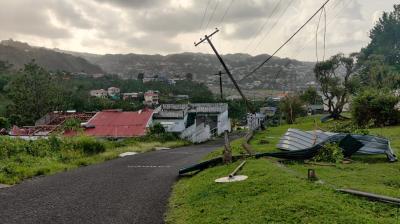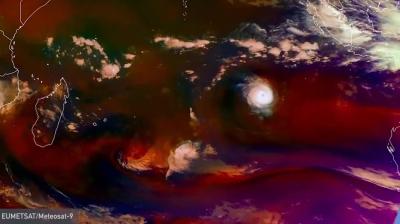
Extreme weather
An extreme weather event is rare at a particular place and time of year, with unusual characteristics in terms of magnitude, location, timing, or extent. The characteristics of what is called extreme weather may vary from place to place in an absolute sense.
Overview
Examples of extreme weather and climate events include, but are not limited to, heatwaves, cold waves, heavy precipitation, drought, tornadoes and tropical cyclones.
Human-induced climate change beyond natural climate variability, including more frequent and intense extreme events has caused widespread adverse impacts and related losses and damages to nature and people. (IPCC, 2022)
The adverse impacts of extreme weather and climate events are amplified by their increased intensity, duration and spatial extent. Sequential extreme events can compound increasing impacts above what would normally be expected for an isolated extreme weather event.
Impact
Natural climate variability (including the El Niño phenomenon) can result in extreme weather and climate impacts, but climate change is leading to changes in the frequency, intensity, spatial extent, duration and timing of weather and climate extremes. Sometimes these impacts can be unprecedented.
Climate change is already affecting every inhabited region across the globe, with human influence contributing to many observed changes in weather and climate extremes (IPCC AR6-SPM).
For example, as air warms it can hold more water vapour – about 7% per 1 °C – increasing the intensity of heavy rainfall events.
More frequent and more intense weather events, such as severe heatwaves, and heavy precipitation lead to increased impacts on more vulnerable populations.
Additionally, human influence has likely increased the chance of compound extreme events since the 1950s, including increases in the frequency of concurrent heatwaves and droughts.
The number of disasters has increased by a factor of five over the past 50 years, driven by climate change, more extreme weather and improved reporting. Improved early warnings and disaster management, has decreased the number of deaths almost three-fold.
Extreme weather events have increased to the point that World Meteorological Day 2022’s theme was Early Warning and Early Action and focused strongly on climate change and extreme weather.
Improving the understanding and characterization of extreme weather and climate impacts is also crucial for decision support and Disaster Risk Reduction (DRR).
WMO's response
WMO works with Members and their National Meteorological and Hydrological Services to collect and share official weather observations, weather forecasts and climatological information.
This data and information can help to inform early warning systems so that people can take action to mitigate disasters before they happen.
WMO has contributed to the implementation of Early Warning Systems (EWS) to protect people and livelihoods since its establishment. It is now co-leading international efforts through the United Nations Initiative “Early Warnings for All by 2027” to strengthen Earth system observations and monitoring, predictive and warning capabilities in every region globally.









